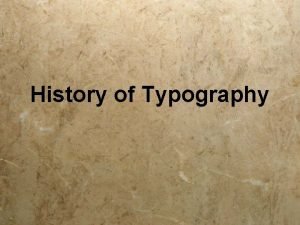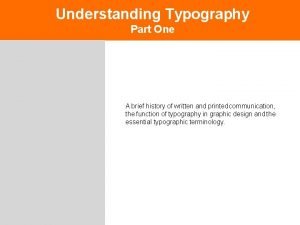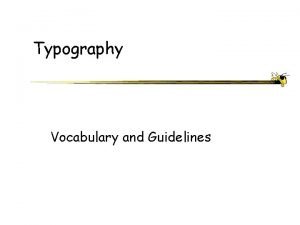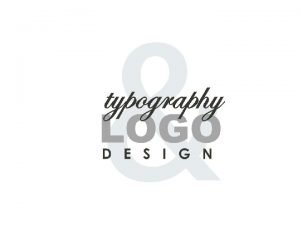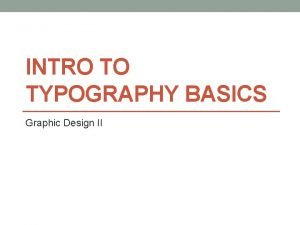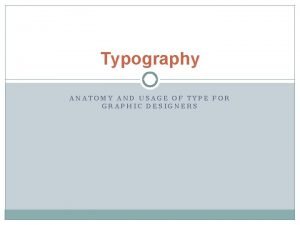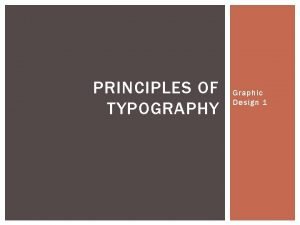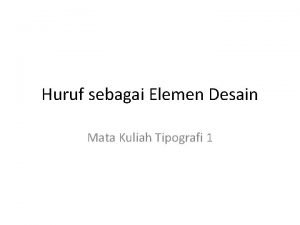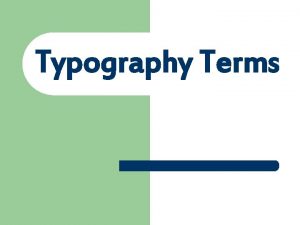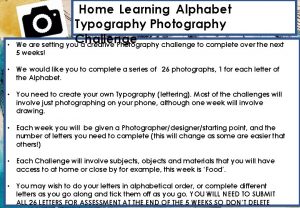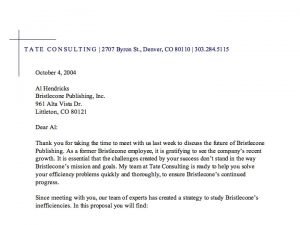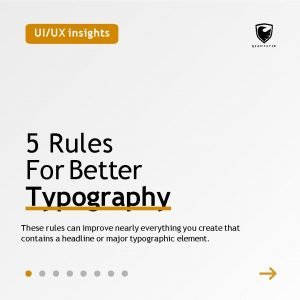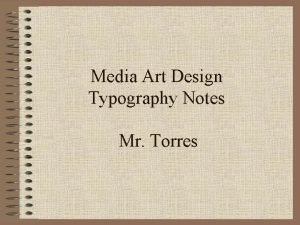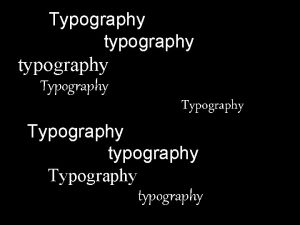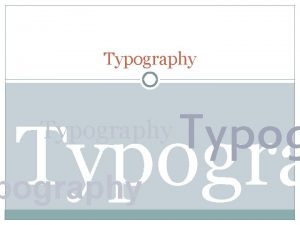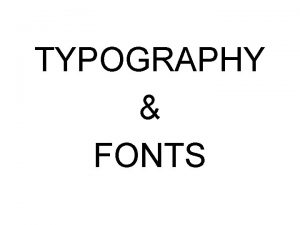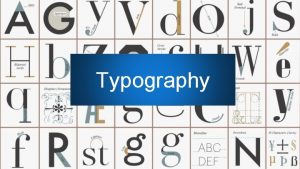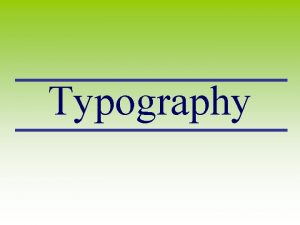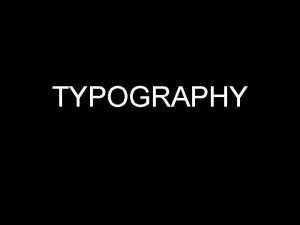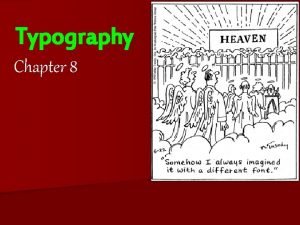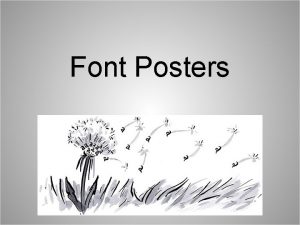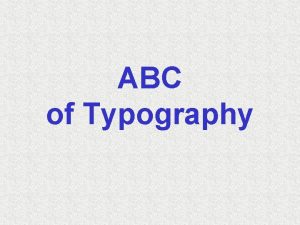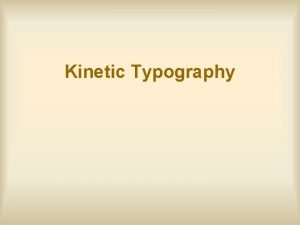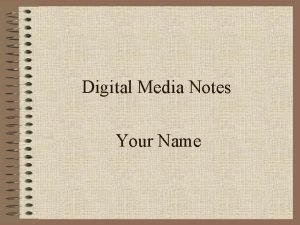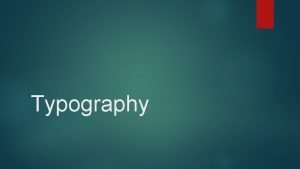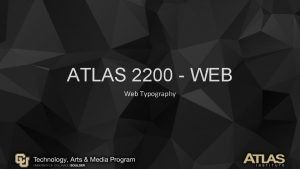History of Typography What is Typography The art















- Slides: 15

History of Typography

What is “Typography? ” § § The art and technique of printing The “study” and “process” of typefaces § “Study” § Legibility or readability of typefaces and their layout § Attractiveness of typefaces and their layout § Functionality and effectiveness of typefaces and their layout § How a typeface/layout combo “enhances” or “honors” content § “Process” § Artistic composition of individual type § Setting and arrangement of type § Basic elements of “desktop publishing” § Typeface § A full set of type made to a particular design (size and style) § A font

Some Typeface Examples § Quick brown foxes jump - Times New Roman § Quick brown foxes jump - Bookman Old Style § Quick brown foxes jump - Courier New § Quick brown foxes jump - Trebuchet MS § Quick brown foxes jump - Comic Sans MS § Webdings

Typography and Print § Typography is defined in relation to print § History of (Western) printing § Johannes Gutenberg § § Europe’s first printer (42 -line Bible, 1455) First designer of typeface Gothic type: modeled after German script Goal: To replicate the look of a manuscript Bible § Aldus Manutius § Designed “Italic” type (“of Italy”) in the 1490 s § Modeled on handwriting of Venetian clerks § Compact form allowed for printing of smaller books

Typography and Print: Creating Type Geofroy Tory • • • 16 th Century French Designer Influenced by architecture and the work of Leonardo da Vinci Designed his typeface on the proportions of the human body

“Anatomy of a letter” - Some terms eventually associated with the potential features of type design

(Not Tory, but an example of a full set of typeface)

§From physical type to printed page §The composing sticks: words formed, placed into sticks §The galley: sticks placed together, spaced apart §The chase: galley placed inside, wedges add margins §The form: inked, then placed in the printing press

Typography and Print: The Power of Typography • Typography takes an active role in the content § Helped inspire later modernist typographers to use strong contrasts in type sizes and design, and new angles of type • Visible as well as audible poetic element

What does this mean today? § Font has taken many shapes; its use has become about design and distinction

Graffiti - first seen in pre-historic cave drawings… • was used primarily by political activists to make statements and street gangs to mark territory • In the late 60 s, it began its use for identity • “TAG” is the term used for writing one’s name or nickname - it has style, yet generally lacks an aspect of quality art work

• ‘Tagging’ began in Philadelphia, quickly spreading into New York - although NY is famed for starting it • Graffiti (Urban Art) is the more artistic form of ‘tagging’ and has attracted people of all races, religions, gender and nationalities - from the broadest types of backgrounds and from all socio-economic classes - and can range in writers aged 8 to their 30 s …. as it can be individualized, personalized and identifiable using FONT

Enhancement using COLOUR and BALANCE Monochromatic SHADES, VALUES and TINTS

Media Logos

Work Cited Chin, Robin. "History of Typography. " History of Typography. Nov. 7 2006. cs. 27 Aug 2008. <http: //64. 233. 167. 104/search? q=cache: Ek. DKt. C 3 dw. PAJ: www. cs. ucsb
